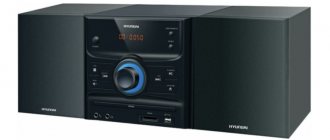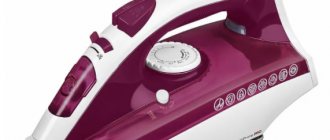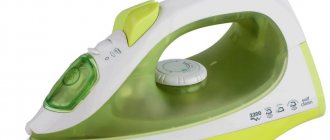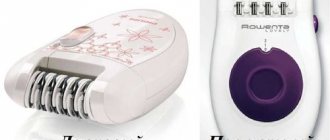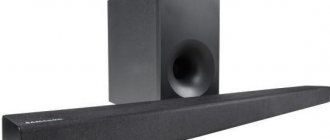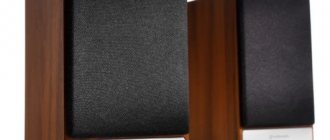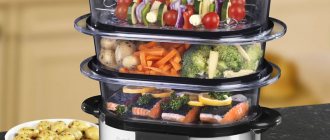What is a vibrating plate and why is it needed?
To compact soil, asphalt or other coverings, special devices are used - vibrating plates.
When constructing various objects, initial preparation and careful compaction of various types of bulk and cohesive materials (gravel, black soil, clay, sand, crushed stone, asphalt, paving slabs, etc.) are necessary. Tamping contributes to better water resistance, filling voids and, in general, improving the load-bearing properties of the soil.
If the initial layer is not prepared properly, this can subsequently lead to destruction of the foundation, subsidence of the working surface and other troubles.
The vibrating plate carefully and evenly compacts the soil surface. It is used on limited construction sites, complex repaired areas, where the use of large construction equipment is impractical.
For example, in such cases:
- When laying paving stones or paving slabs.
- For pothole repair of road surfaces.
- On a small site or area with a slope.
How to Compact Soil Without a Vibrating Plate
How to compact sand? Overview of methods
Tamping is required for construction on the ground, filling a cushion under the foundation (on any soil), installing a sand layer for the floor, and laying paving slabs .
It is performed either manually (using homemade or factory-made tools), or mechanized using various vibration devices.
When working with equipment that operates by transmitting strong mechanical vibrations, it is mandatory to use hearing and vision protection, as well as special gloves, shoes and clothing.
The goal is to obtain a dense layer that is not subject to heaving, shrinkage, compression, and to create reliable support for the foundation, floor, and road surface. According to the technology, several passes are usually made over the entire surface, then the quality of the compaction is visually assessed. Well-compacted material does not collapse when stepped on.
Where is sand compaction needed?
1. Sandy soil
.
A distinctive feature is that it does not retain water well. Therefore, this type of soil is not susceptible to frost heaving, which means it is suitable for buildings, including residential ones, but only one-story or very light ones. Heaving soils begin to push out the foundation in winter.
This is because the water they contain freezes and expands. Such soils, unlike sandy ones, are little or completely unsuitable for construction. They, as well as weak soils, are often completely removed and replaced with sand.
In any case, in preparation for installing the foundation, careful compaction is required either manually or using special tools.
During the process, the site is passed through three times. If after the third time it was not possible to achieve the desired result, then make a thinner layer. When compacting sand, including when preparing the soil, it is necessary to wet it, but moderately.
Dry bulk material does not stick together, and if it is too wet, it is impossible to compact it
. It’s easy to check the degree of moisture - if, when you squeeze it in your hand, it doesn’t stick together into a lump or crumble, then you can start working.
In the hot season, you will have to constantly wet the surface, as it dries quickly.
2. Sandy foundation pad.
Foundation bedding is used in the construction of light buildings: frame, foam block or one-story buildings made of heavier materials. It is not suitable for installing the foundations of multi-story buildings, since it does not have a high load-bearing capacity.
Coarse river or washed quarry sand is suitable for constructing a foundation cushion. It’s not worth buying a cheaper (unwashed) one. The difference in price is insignificant, but at the same time, the dirty contains a high content of impurities, primarily clay, which has a bad effect on the strength of the base of the building.
Positive characteristics of the foundation cushion:
- ease of manufacture - simple backfilling, without the use of complex equipment;
- accessibility - sand is easy to buy with delivery in any region;
- low price;
- reduces soil load well;
- Easy compaction even by hand.
It is not recommended to use in soils with high water levels. If this material is the only possible option, then geotextiles are laid at the bottom of the trench or pit. The thickness of the layer is selected taking into account the expected load and type of soil. The sand is poured in layers, moistened (but not filled with water) and compacted tightly.
Manual tamping. good tool. Personal experience
Manual tamping, device, working methods, productivity. Compacting sand when constructing floors.
Tamping for laying paving stones manually
tamping for laying paving stones manually.
3. Underlayment for the floor.
When installing houses on the ground, a non-rigid underlying layer must be installed. It includes two layers. They are poured on top of gravel or crushed stone, each layer is moistened and compacted. For backfilling, as well as for the foundation, river sand or washed quarry sand is used. To achieve uniform thickness, pegs are installed and then removed.
4. Laying paving slabs .
When paving pedestrian roads, alleys and areas with paving slabs, sand bedding must also be used. The first and final layers of the paving stone cushion are made from it. Crushed stone is used as a layer between them. All layers of the cake under the tile are compacted tightly according to technology requirements, and periodically moistened to achieve the best result.
For backfilling, sifted river material is used. The thickness of its layers is determined depending on the depth of the trench and the height of the road surface element.
It is often necessary to remove soil to great depths due to heaving and other problems that do not allow the soil to become a reliable basis for the installation of paving slabs .
In these cases, it is necessary to add a lot of sand and compact it thoroughly. The finishing layer is made at about 7 cm, dry cement is often added to it.
Tamping accessories
Made of metal, it weighs from 5 to 10 kg. It consists of a handle and a base (“paw”) - a plate measuring approximately 20 x 25 cm or a channel (the smaller the dimensions of this part of the device, the greater the impact force). The handle of the tool is straight (in the form of a pipe) or T-shaped, with two handles on the sides. If necessary, a manual tamper with a channel can be made heavier by filling it with cement.
If you need to save money, then it’s easy to make the device yourself. Two manufacturing options:
- Make a handle from a heavy wooden beam about 1 m long and nail a “paw” from a strong board to it from below.
- Buy a separate ready-made plate (costs about 1000 rubles) and attach it to a shovel handle or a metal stick.
To compact soil and bulk materials, including sand, in a limited space, a “vibrating foot” is used. The engine of this device runs on gasoline or diesel fuel. At the base of the device there is a “heel” plate with a width of 15 to 30 cm and a length of about 33 cm.
Vibratory rammers also vary in power. The principle of operation is based on a vertically directed force, like a manual device, but the efficiency is much greater.
This type of equipment is used on sites where it is impossible to operate large-sized equipment: vibratory plates and vibratory rollers.
For work over a large area, subject to the possibility of free movement, tamping using a vibrating plate .
This apparatus consists of a motor, a basket or “shoe” and a guide handle.
The unit moves back and forth, transmitting strong mechanical vibration (vibration) to the sand particles, due to which compaction occurs.
Types of equipment for soil and bulk materials with a slab base:
- gasoline;
- diesel;
- hydraulic;
- electrical;
- with remote control .
by weight. The lightest ones are suitable for sand.
For the largest volumes of work, vibratory rollers are used. Their types:
- with manual control due to the guide handle;
- self-propelled with an operator's cabin, single-drum (wheeled at the rear);
- with a two-roller cabin;
- trench with remote control
.
The design of a high-quality vibratory roller allows compaction to be carried out along the edges of the site, that is, the use of additional equipment (manual or vibratory rammer) is not required.
The price for the services of professional builders to compact sandy soil or sand backfill is from 90 to 600 rubles per m2.
If the area that needs to be compacted is large, or we are talking about permanent work, then you need to compare these prices with the cost of the equipment.
In many cases, it is advisable to purchase a device or rent one and do everything yourself.
Design and operating principle
Structurally, the vibration compactor has an electromechanical eccentric, which creates vibrational mechanical vibrations. Using a belt drive, torque from the engine is transmitted to a rigidly mounted eccentric. The resulting vibrations transmit vibration to the working metal base of the unit. The entire surface area of the slab acts on the compacted coating.
Expert opinion
Kuznetsov Vasily Stepanovich
Equipment for construction work is subject to increased reliability requirements. Therefore, the design of the vibrating plate should be simple, maintenance should be easy, and the operating principle should be clear.
Kinds
Vibrating plates can be divided into several types:
Vibrating plates: 1-Petrol 2-Diesel 3-Electric
By energy use
- Gasoline
An economical option, it is in greatest demand (prices are lower than diesel analogues). They can move freely around the work site (not tied to a power source, unlike electric vibrating plates), and are able to work in cold and hot weather.
Disadvantages : heavy weight, make a lot of noise during operation.
- Diesel
Easy to operate, reliable, durable, independent of the power source.
Disadvantages : heavy, very noisy during operation. They may not work well in the cold.
- Electrical
They are light weight, low noise, and environmentally friendly. Can be used indoors (since there is no internal combustion engine, there is no exhaust gas pollution).
Disadvantages : the working area is limited by the length of the power cable; are used less frequently, as additional electrical equipment is required.
By mode of transportation:
- Reversible
More maneuverable (possibility of reversing without turning); indispensable in narrow passages.
Disadvantages : heavy weight, high price.
- Progressive
They only move in the forward direction. Vibrating plates of this type are cheaper and lighter.
Disadvantages : Additional space is required for turning.
By weight:
- Lightweight (up to 75 kg) - used for compacting soil 10-15 cm thick (for finishing and landscaping work).
- Universal (75-90 kg).
- Medium weight (90-140 kg) - used for layer-by-layer compactions up to 35 cm thick.
- Heavy (from 200 kg or more).
Operating principle of a vibrating ramming device
Different types of vibratory rammers have different vibration amplitudes and frequencies. Usually, when the first indicator is low, the last one is high, and vice versa. If the emphasis is on amplitude, the equipment is used for compacting loose soils. In the second case, the device is suitable for working with viscous compounds, for example, concrete.
Vibrating plate diagram
The operating principle of such equipment is simple. Torque is transmitted from the motor to the “unbalance” shaft - the eccentric, also called the inertial element.
The latter is rigidly fixed to the tamping plate, which receives the energy. After this, the vibration passes to the ground, compacting it.
Almost all vibratory rammers for soil compaction operate in a forced oscillatory mode. To create it, you need a centrifugal vibration exciter. When the eccentric moves, a forced force is generated, which is the basis for the occurrence of vibration.
Rating of the best: 5 proven models
We selected five models of modern vibrating plates from trusted manufacturers.
CHAMPION PC9045F
The linear vibratory plate is equipped with a 6.5 liter four-stroke gasoline engine. With. Impact force - 15 kN.
Refers to professional construction equipment.
Used for the following tasks:
- Road surface repair.
- Laying asphalt.
- Compacting crushed stone and sand.
Key Features:
- The engine is equipped with a critical oil level sensor. The sensor monitors the oil level in the engine crankcase; if there is not enough oil, the vibrating plate will not start.
- Recoil starter for starting.
- The compact design allows you to work in hard-to-reach places - near poles, in a trench, next to a curb or wall, etc.
- The vibrating plate is equipped with a 3.6 liter fuel tank.
- The maximum compacted area is 416 m2/h.
What users say:
- Excellent for working in confined spaces - where a roller cannot pass, a vibrating plate can pass freely;
- Starts great in cold weather;
- Easily moved by hand (does not require much effort);
- The handle is equipped with a mechanism that reduces the transmission of vibration to the operator's hands.
DDE VP160-HK
Reversible vibrating plate with Honda GX200 petrol engine. Impact force - 30.5 kN.
Key Features:
- High-performance vibrating plate equipped with a 6 hp motor.
- The powerful engine allows you to compact soil to a depth of up to 50 centimeters in 1 pass.
- Efficient transmission or selection of torque from the engine to the eccentric (carried out using a powerful 3-jaw clutch).
- The vibrator rotor is equipped with reinforced steel bushings, and the motor is mounted on a durable mount. The vibrating plate serves for a long time and reliably.
- There are transport wheels for easy movement.
What users say:
- The engine has a long service life.
- High quality materials from which the device is made.
- Convenient to use.
RedVerg RD-29155
Straight-line vibrating plate with a four-stroke gasoline engine. Engine power - 6.5 hp, impact force - 13 kN.
Key Features:
- The RedVerg Vibrating Plate has a durable base made from thick sheet of stamped steel.
- The protective cover prevents foreign objects from entering the drive belts.
- Equipped with a soft handle that dampens vibrations.
- The package includes a polyurethane pad - it allows you to carefully lay paving stones or paving stones.
- There is an irrigation system - an additional water tank, with which you can moisten the surface under the slab when laying asphalt.
What users say:
- Easy to manage.
- The best option in terms of price/quality ratio.
Elitech PVT 60 BVL
Petrol vibrating plate with a reliable four-stroke engine. Power - 6.5 hp, centrifugal force - 10.5 kN.
Key Features:
- The vibrating plate engine of this model is installed on a reinforced frame.
- Works without interruption in extreme heat, as well as in frost. The full temperature range is from -10 to +40 °C.
- The device is equipped with an impact-resistant casing to protect the belt transmission.
- The vibrating plate is equipped with an anti-vibration system. Reduces the negative impact of vibration on the engine and extends its service life.
- There is an irrigation system with a 10 liter tank.
- Ergonomic control handle. Conveniently folds for storage or transportation.
- The set includes transport wheels for easy movement around the site.
What users say:
- Easy to start.
- Good build quality.
- One of the disadvantages is that vibration can cause the bolts of the transport wheels to come loose.
CHAMPION PC5431F
Compact petrol vibrating plate of linear type. Equipped with a four-stroke engine, power - 2.3 hp, impact force - 8.2 kN.
Key Features:
- Vibration frequency - 5140 beats per minute, compaction depth - 200 millimeters.
- The body is made of impact-resistant plastic. Provides reliable protection of the actuators of the device from impacts of crushed stone and small stones, as well as from dust.
- The vibrating plate is equipped with a special shock absorption system that absorbs vibrations well. Thanks to this system, engine parts wear less and last longer.
- There is an engine oil level sensor.
- Comfortable handle. It can be adjusted in height; all device controls are located on the handle.
What users say:
- Compact and lightweight vibrating plate, easy to use and transport.
- Does its job perfectly.
Features of device care
In order for the vibrating plate to serve for a long time, you need to adhere to the manufacturer’s recommendations, follow all instructions and carry out scheduled maintenance (maintenance) in a timely manner.
Here are some recommendations for caring for vibrating plates:
- It is necessary to monitor the condition of the filter element, clean it or replace it in a timely manner.
- Use quality oils and fuel. Check the oil level in the engine and gearbox regularly. Replace promptly according to instructions.
- Before starting to idle, it is advisable to warm up the engine for 5-10 minutes. It is especially important to do this at low ambient temperatures.
Expert opinion
Kuznetsov Vasily Stepanovich
During operation, you need to treat the device with care and perform only feasible tasks. It is important to monitor the temperature of the engine and, if necessary, take rest breaks and turn off the device.
Do-it-yourself manual rammer for soil compaction
On the farm there is often a need to compact soil or crushed stone in a small area. For example, you need to repair a path, raise the floor in a barn, or straighten fence posts.
A hastily put together hand tamper does not last long and is usually sent along with the rest of the construction waste.
Don’t waste time and effort every time, take two hours and make a good tool for compacting the soil with your own hands.
Materials used
A suitable material for homemade manual tamping is a square beam with a side of 100 or 150 mm. It will be difficult to work with a round log in the corners and will have to be compacted with a significant overlap of the previous impact point.
It is not at all necessary to take new lumber; a used lumber will do. The main thing is that the wood is free from rot and splits. Choose a piece of timber that you can lift.
The height of the manual tamper can be waist-high or chest-high, depending on ease of use.
If you have no experience working with this tool, take a longer block, try it out and shorten it if necessary.
Drawing of a manual tamper for soil compaction.
You will also need:
- A piece of 2mm steel plate.
- A round birch stick 450 mm long (an old shovel handle will do).
- Wood screws.
- Carpenter's glue.
Materials for the manufacture of manual soil compaction.
Prepare the timber
Saw off the ends of the workpiece according to the dimensions exactly at right angles. Using a plane, adjust the plane of the lower end of the beam to a square. Remove 5 mm wide chamfers from sharp edges.
Preparing timber for tamping.
Decide how high-quality a finish you want. Before painting, the block will have to be sharpened and sanded. When a beautiful look is not needed, it is enough to clean the surface a little so that there are no splinters.
Make a shoe
Transfer the dimensions of the workpiece from the drawing to the steel sheet.
Cut out the plates for the shoe.
You can simply align the timber vertically installed on the metal and trace the outline with a pencil.
We make a soil compactor shoe.
Depending on the thickness of the plate, cut the workpiece with metal scissors or cut out the excess with a grinder. Remove burrs with a file, holding the part in a vice.
Mark and drill holes for the screws, make recesses for the caps with a countersink or a drill of a larger diameter.
Sand the surfaces with sandpaper.
Tamping shoe.
Bend the wings of the workpiece in a vice, which will be easy to do with the first two opposite sides. When bending the two remaining sides, the vise jaws may turn out to be wider than the shoe, then use a timber prepared for tamping.
Secure the shoe
Check the fit of the steel plate on the beam, if necessary, tap the metal or sharpen the wood. The shoe should fit snugly against the end on all planes. Drill holes for screws in one wing, pointing the drill at a slight angle into the wood, and tighten the screws.
We attach the shoe to the prepared timber.
Turn the beam over to the opposite side and fasten the other wing in the same way. Make sure that the shoe does not move away from the end.
When drilling subsequent holes, guide them past the already screwed in screws.
A shoe attached to a manual tamper.
Set the handle
Mark the drilling center at a distance of 100 mm from the top end. Select a drill bit with a diameter 2 mm smaller than the cross-section of the handle. Make a through hole perpendicular to the surface of the beam.
We make a hole for the handle of the tamper.
Even with careful drilling, the outer parts of the hole will be slightly larger than the inner diameter. Sharpen the wood with a file, periodically trying to insert the handle into place.
At the same time, correct any possible misalignment of the hole relative to the plane of the beam. Achieve a tight (but without significant force) fit of the handle, and if necessary, lightly trim the stick. Do not try to hammer into the handle - the wood may split. Place the stick in the beam and make marks.
Installing the handle on the soil tamper.
Apply glue to the sides of the hole.
Place a pen on the marks and wipe off any excess glue. Drill a pilot hole and secure the handle with a long screw.
Fixing the handle on the tamper.
After the glue has hardened (according to the manufacturer’s recommendations), the manual tamper is ready for use.
Photo of a homemade manual soil tamper.
After use, clean the device from dust and store it in a place protected from rain and snow. Over time, the bottom of the tamper wears out; monitor the condition of the metal lining and change it in a timely manner.
How to choose the best one?
Before choosing and purchasing a vibrating plate, pay attention to the following details:
- Technical characteristics, manufacturer's documentation;
- The size of the base plate directly affects the strength of vibration. A powerful apparatus with a wide plate moves faster. If the working surface is small, you get a powerful and more durable unit, but productivity will decrease.
- The design of the working part of the slab is a relief and heavy slab suitable for working on soil of strong and medium flowability; a smooth, lightweight slab is ideal for asphalt.
- Vibration frequency (number of repetitions) - the more often the vibrations, the better the compaction.
- Vibration amplitude (impact force) - the stronger the impact on the surface, the more powerful the unit and the greater the depth of soil compaction.
- Productivity is the ability of a unit to produce a certain amount of work. The surface processing speed depends on this parameter.
- Economy - fuel or electrical energy consumption is an important parameter, as it affects the payback of the device.
- Availability of an irrigation system - if there is such a system, it is more convenient to work. Viscous soil does not stick to the working plate of the unit, and the compaction is better.
- Reversing the engine is necessary when working in narrow passages and trenches; in other cases, there is no point in overpaying for this function.
Compaction of soils by loading
Compaction of soils by loading
with the installation of
vertical drains
is carried out with
weak water-saturated silts, clays and loams
, which are in a fluid and fluid-plastic state, as well as
peats
.
The listed soil deposits have low water permeability.
embankment
plays the role of loading , and
vertical drains
accelerate the compaction process.
READ ALSO: Prefabricated strip foundation
Currently, in addition to sand drains, drains made of special porous cardboard, as well as plastic tapes in a paper casing, have been used.
It was previously noted that with the increase in the volume and pace of construction, and the increase in requirements for soil stability, the solution of such a complex problem as the purposeful artificial change of the foundations of buildings and structures in the direction necessary for humans acquires special importance.
